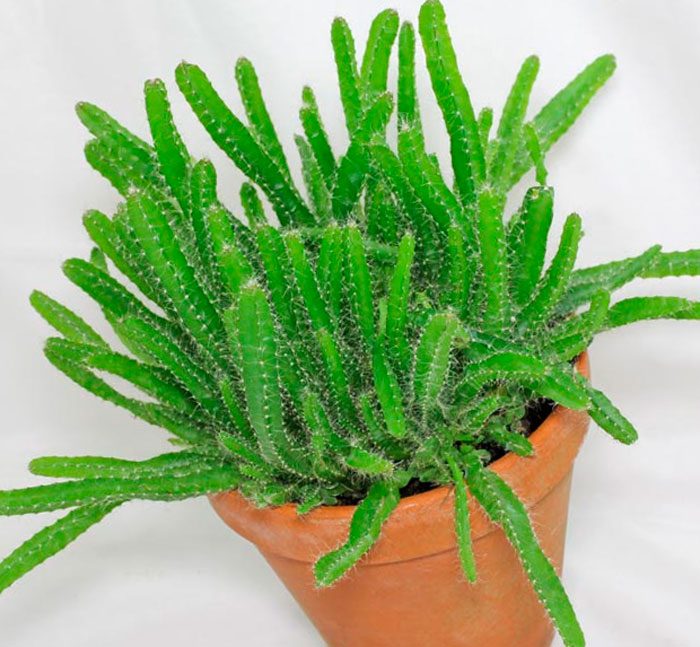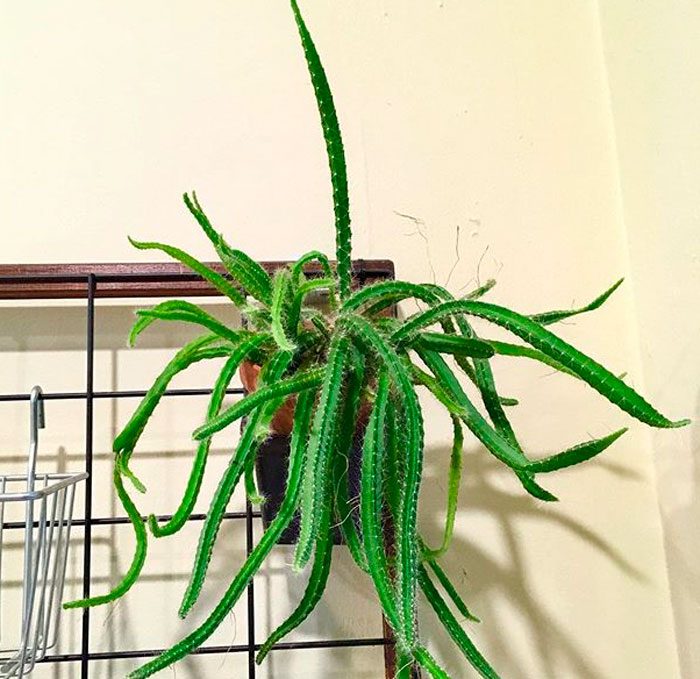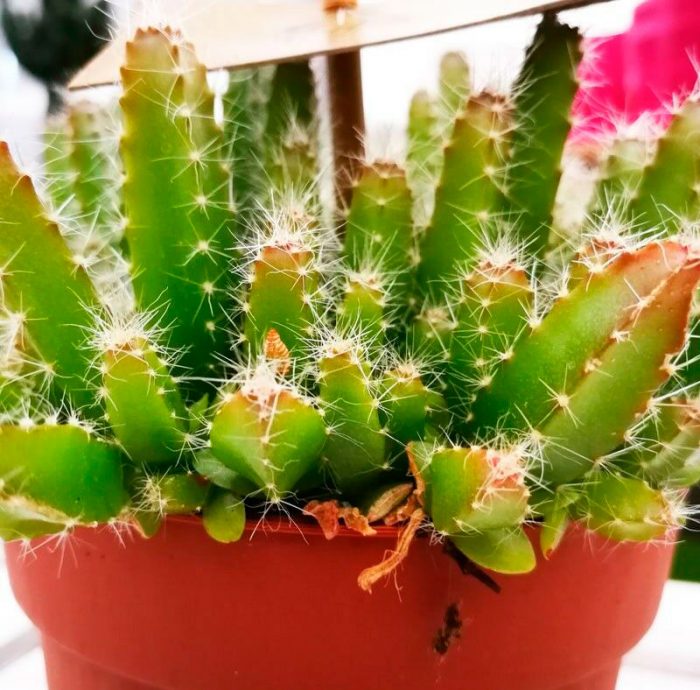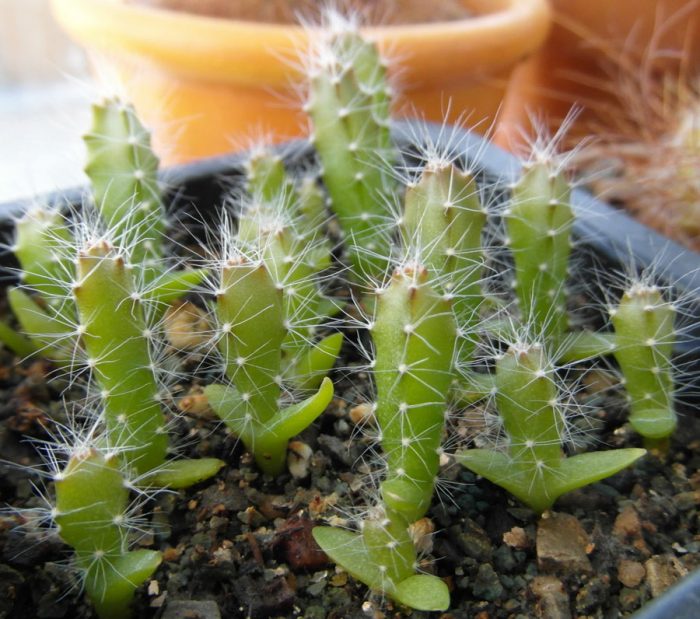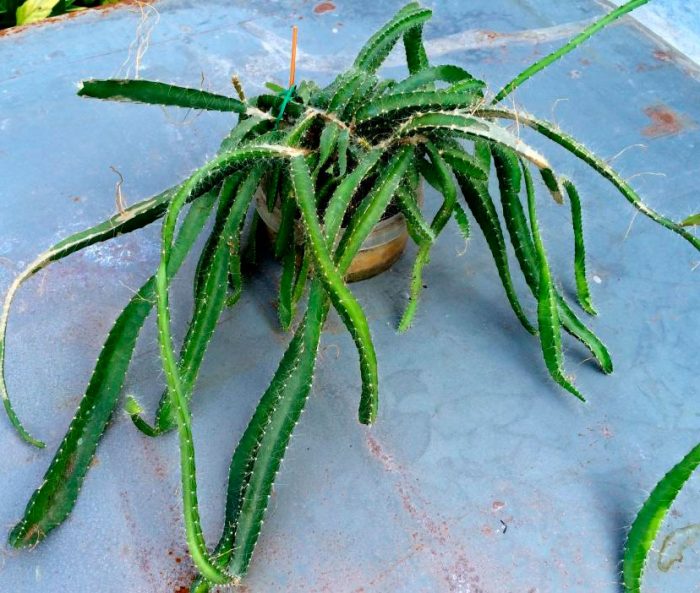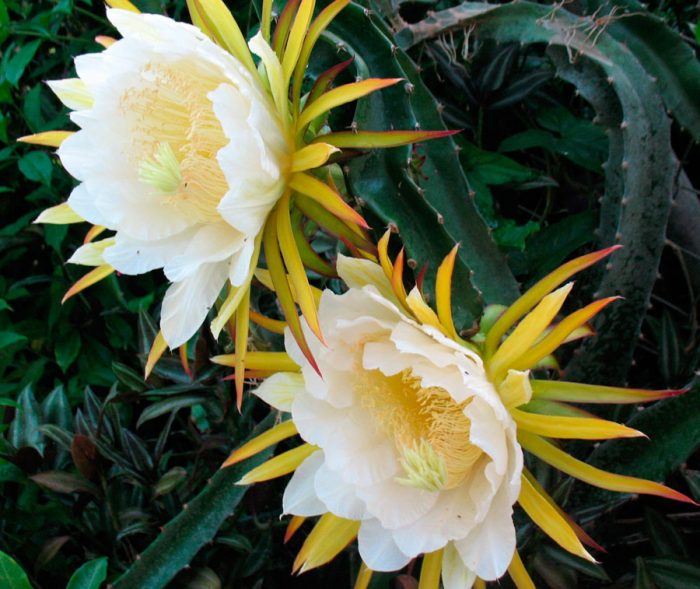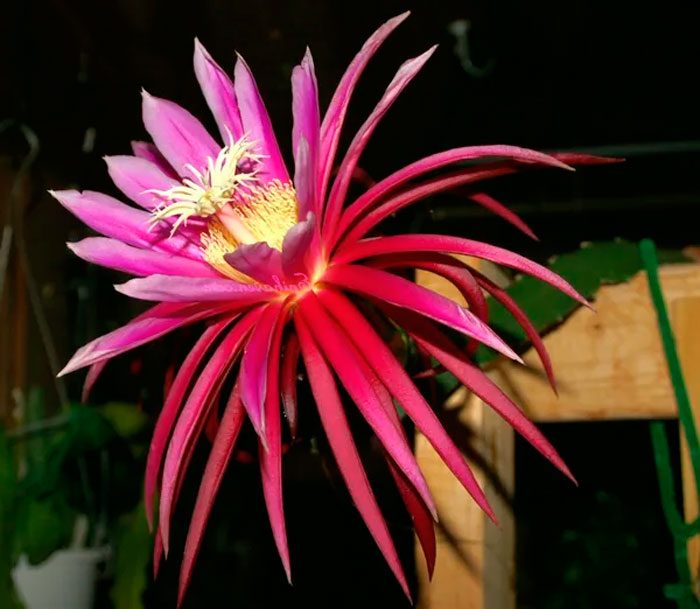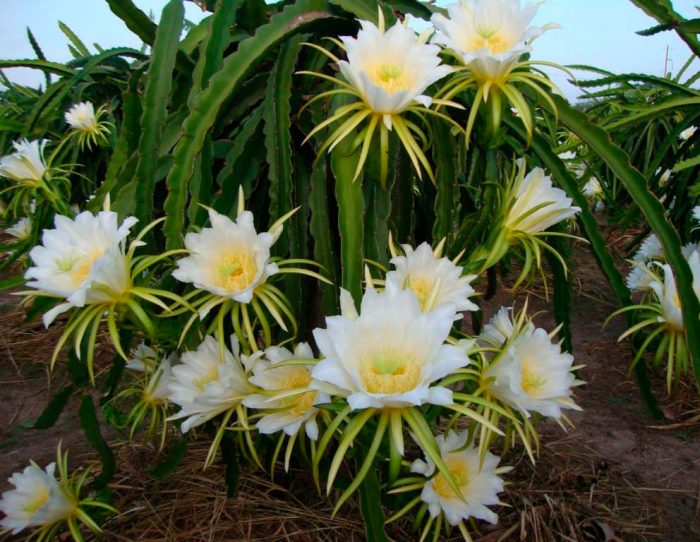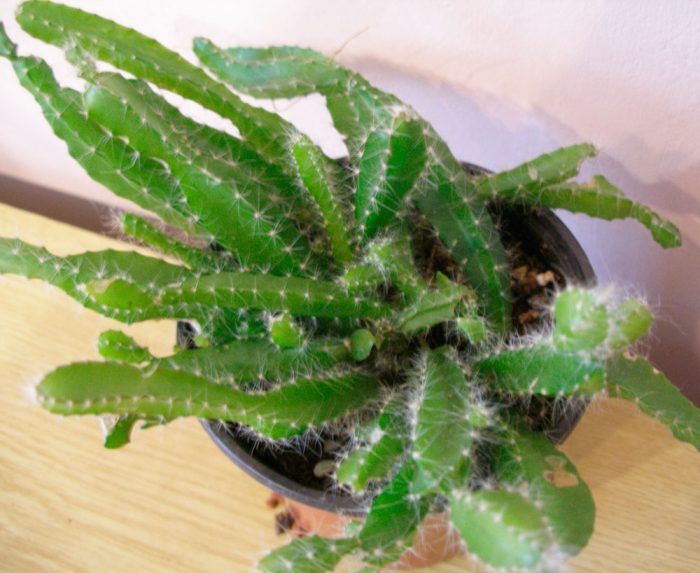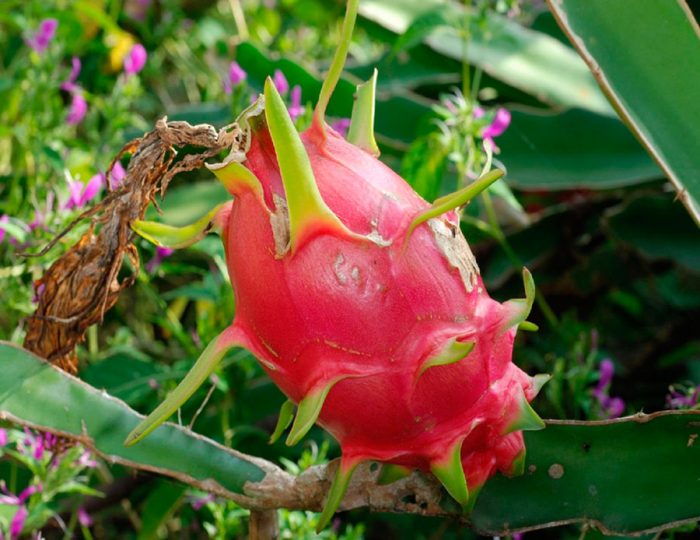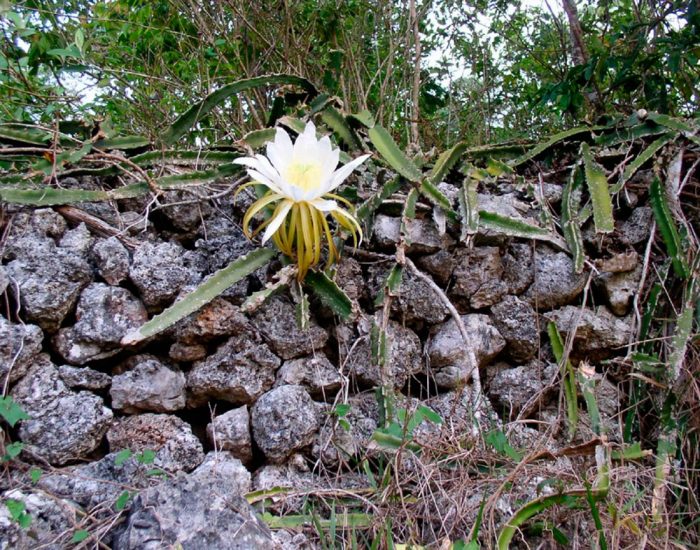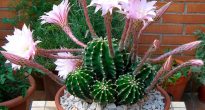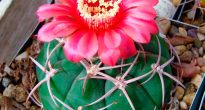The very showy liana-like plant, Hilocereus, is part of the Cactaceae family. This plant is considered by many growers to be the king of all cacti. During flowering, snow-white flowers appear on the bush, which at night fill the air with a heady aroma. This flower comes from Central America, but it grows well in the subtropics and tropics of other continents.
Content
Hilocereus features
Hilocereus is a relatively large cactus. It forms a sprawling bush, which can reach a height of about 200 cm. Its shoots are quite thick and can reach about 70 mm in diameter. Their surface is covered with a waxy skin, which has a dark green color. Often the stem has a drooping shape and has a triangular cut. The stems grow rather quickly on both vertical and horizontal surfaces. In length, the shoots can reach about 300 cm. Over time, filamentous aerial roots are formed in the internodes. They are needed in order to get the nutrients necessary for the plant from the air. And the flower also needs them in order to cling to the support. Also on the shoots there are pointed edges, on which needles are formed, collected in bunches. The length of the spines can vary from 0.1 to 1 cm. Most of the needles are only slightly sharp or completely soft. There are also varieties that do not have thorns at all.
The first flowering of such a cactus occurs when the bush is 2–4 years old. Flowers form at the tips of the shoots and open only at night. They can be colored purple, white or milky. However, with the onset of morning, the flowers close. They can be very large and reach 10 to 30 centimeters in diameter, and sometimes up to 40 centimeters. In flowers, the cores are covered with a large number of yellow stamens. Pollination of flowers occurs with the help of nocturnal insects, and after a while edible and very fragrant fruits are formed in their place, which are called pitahaya. The size of the fruit can be varied: from the size of a medium-sized melon to kiwi. On the surface of each fruit, there is a purple or pink skin with small soft growths. Under this skin is the pulp, which is very tasty and is considered a delicacy.Her color can be either pink or white. There are very small black seeds in the pulp throughout the fruit. If you provide the cactus with optimal growth conditions, then it will be able to bloom and bear fruit up to four times throughout the year.
Caring for hilocereus at home
Indoor Hilocereus is very easy to care for. For its planting, light soil mixtures are chosen, saturated with nutrients. If desired, you can use a commercial cactus potting soil mixture. The pot for such a cactus is chosen rather large, because it has a developed root system.
In regions with mild climates and warm winters, such a cactus can be grown in the garden. Of course, the tropical climate is closer to the hilocereus, but it is not afraid of cold snaps to 0 degrees. If the plant is adult, then a well-lit or slightly shaded place is chosen for planting it, the main thing is that it is warm. It is also recommended to install a support next to the bush, along which he can climb up.
Watering such a cactus is rarely required. It is carried out only after the clod of earth in the pot is completely dry. With the onset of autumn, watering is carried out approximately 1 time in 7 days. And in winter, you need to take a break in watering for 30 days. During this time, the bush will be able to rest well, and then in the new season it will delight you with lush flowering. Therefore, do not forget to give the cactus a dormant period.
Reproduction methods
Growing from seeds
Hilocereus can be propagated by seed. They should be dry, well-ripened and not more than two years old. Small expanded clay or pebbles must be placed on the bottom of a small container. Then the drainage layer is covered with a mixture of leaf earth and sand (1: 1). Moisten the substrate and dip the seeds into it 10-15 mm. The crops are covered with a film on top and removed to a well-lit place in which the air temperature is kept at 20 degrees. The first seedlings should appear after 15-25 days.
Vegetative propagation
You can propagate this plant vegetatively using part of the shoot. After the cutting is cut, it is left for 2 days in the open air so that it has time to wither well. Then plant it in a light sandy substrate for rooting, after which it is transferred to a shaded area. The cutting should take root after about 30 days. During this time, do not forget to systematically moisten the section, and, if necessary, add water to the sump. As soon as the cuttings grow their roots, they begin to accustom him to bright lighting, but they do it gradually.
Possible difficulties
Hilocereus is very resistant to pests and diseases. However, if the rules for caring for the plant are violated, problems may begin. For example, if liquid stagnates in the roots or it gets on the shoots, this will cause the development of rot. It can cause the death of the bush. Rot develops especially quickly if the room is too cool.
If the room is hot and low humidity, then mealybugs or spider mites can settle on the plant. In this case, systematically moisten the cactus with a spray bottle or spray it with an insecticide.
Beneficial features
Sprawling, lush-flowering bushes of Hilocereus are able to decorate both the balcony and the garden fence. The bush will eventually cover them completely. Also, this cactus is often used as a rootstock for epiphytic or succulent plants, because it is distinguished by its vitality.
Recently, it began to be cultivated for the sake of obtaining delicious fruits, which are considered a delicacy. Once upon a time, even the Maya ate these fruits, but then they were forgotten. However, in the past few decades, these fragrant fruits have become very popular, as they are rich in antioxidants and vitamins.Pitahaya can be used as an independent dish or as a seasoning for baked goods and meat dishes. Also, drinks and even strong alcohol are made from these fruits.
Hilocereus species with photos and names
The genus Hilocereus comprises about 25 species. All of them are cultivated indoors. Below will be described those of the species that are most popular with flower growers.
Hilocereus Costa Rican
In the upper parts of the thickened creeping shoots, large flowers are formed. The petals are purple with a white edging. If the flowers are pollinated, then an egg-shaped fruit will form in their place. The fruit is covered with a purple rind, while the flesh is scarlet. This plant is widespread in Costa Rica, Peru and Nicaragua.
Hilocereus narrow-winged
This miniature species has a compact bush: both in height and in diameter it is no more than 15 centimeters. The color of the creeping shoots is chestnut; purple flowers with a short tube are formed on their tops. Rounded fruits reach about 70 mm in diameter. This plant is widespread in Costa Rica.
Hilocereus wavy
The sinuous shoots of this species are very long, they can reach up to 500 cm. On their lateral edges, short and hard spines grow, which are collected in bunches. The flowers are painted in a snow-white shade, and in diameter they reach about 27 centimeters. The rather large fruit has an oblong shape; it is covered with a red skin. The flesh of the fruit is white and contains black seeds.
Field hilocereus
The sinuous shoots of this cactus are painted in a gray tint, and in length they can reach up to 200 cm. On the edges of the stems there are soft yellow thorns collected in bunches. White flowers, reaching about 0.3 m in diameter, are decorated with stripes of light green. The fruits are pink, and their flesh, which has a slight melon scent, can be colored peach or yellow.
Hilocereus trihedral
The creeping shoot of this cactus has three pointed edges. Shoots have a greenish color, and on their surface there are many brown or yellow spines, collected in bunches. Large flowers are painted in a snow-white shade.
Hilocereus of Okampa
This liana-like species is widespread in Mexico and Guatemala. Greenish-blue shoots reach about 60 mm in diameter, and their length can be equal to 250-300 cm. Snow-white flowers and bracts are formed at the tops of the stems, as well as purple-colored bracts. Nice-smelling fruits are colored yellow or pale red.
Hilocereus triangular
In nature, the species can be found in Cuba, Jamaica and Haiti. Greenish thin shoots have a liana-like shape. Each shoot has 3 pointed edges, on the surface of which there are rare spines. A large number of air roots grow along the entire length of the stem. The tops of the shoots during flowering are decorated with snow-white single flowers, reaching about 20 centimeters in diameter. When pollinated, small red fruits of a round shape are formed, which reach about 50 mm in diameter.


Watch this video on YouTube

